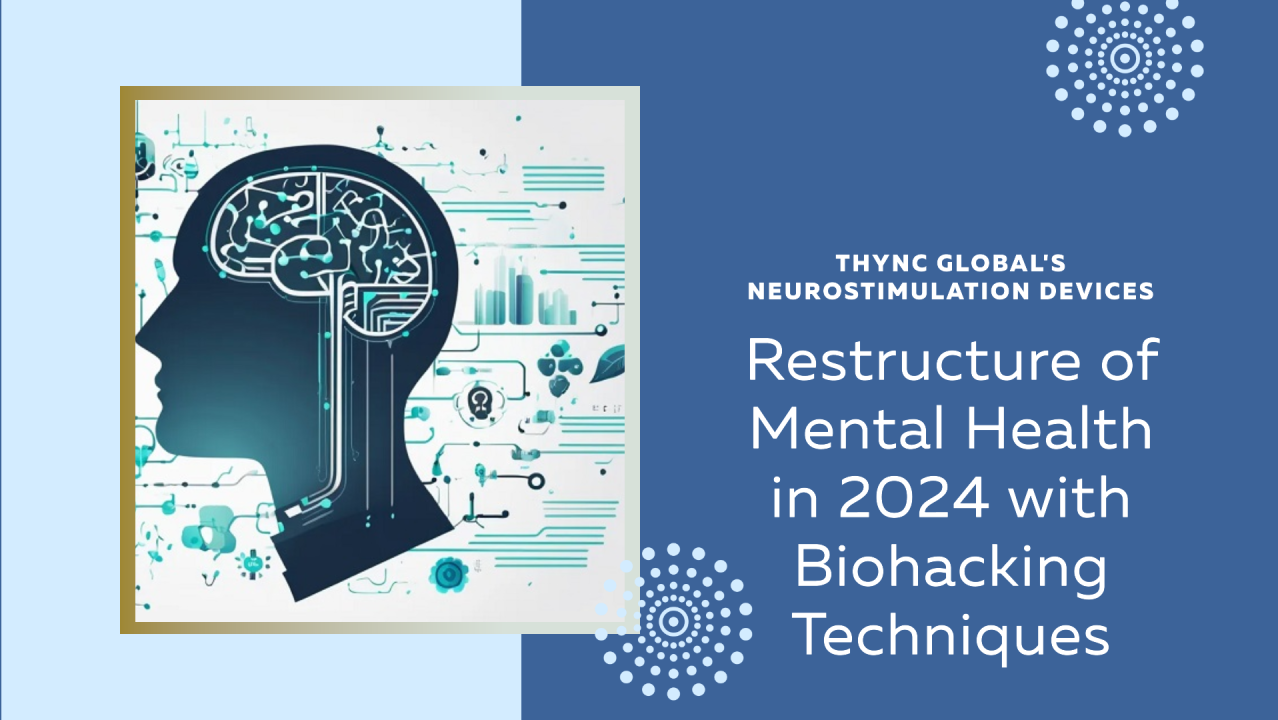How Fitbit is Using AI and Wearables to Transform Healthcare Monitoring

1. How Can Biohacking Techniques Improve Mental Health and Cognitive Function?
Biohacking for mental health focuses on optimizing brain function using various techniques and technologies. Key strategies include neurofeedback, mindfulness apps, and nootropics, which are supplements designed to enhance cognitive abilities.
Companies like Thync Global Inc. are pioneers in neurostimulation devices that use low-level electrical currents to alter brain function and mood. This non-invasive method helps reduce stress and improve mental clarity.
Apple has integrated mindfulness apps and meditation features into its devices, which allow users to manage stress, anxiety, and even improve focus. The combination of biohacking techniques with wearable technologies can significantly enhance mental well-being, making it a popular search trend among users looking to optimize brain performance.
Additionally, MoodMetric offers biofeedback tools to monitor stress levels through smart rings that track emotional responses. These innovations enable individuals to take control of their mental health by providing real-time data on stress and mental performance.
2. What Are the Most Effective Biohacking Strategies for Increasing Longevity Through Personalized Healthcare?
Biohacking for longevity is gaining popularity, with personalized healthcare at the forefront of this movement. Advances in genomic testing, epigenetic analysis, and AI-driven health recommendations enable individuals to tailor their health interventions based on unique biological data.
Synbiota, a leader in synthetic biology, provides personalized healthcare solutions that leverage bioengineering to optimize the body’s cellular processes, directly influencing longevity.
Wearable devices like those from Fitbit, Inc. track critical health metrics such as heart rate, sleep quality, and activity levels. This real-time data can be used to adjust lifestyle habits for a longer, healthier life.
Personalized biohacking strategies, such as optimizing diet and sleep, supplement use, and exercise routines, are becoming more accessible with AI-powered insights into individual health data.
Emerging fields such as nutrigenomics and microbiome analysis are also contributing to this trend. By understanding how diet and lifestyle affect individual genetics and gut health, biohackers can target specific areas for improvement, ultimately extending life expectancy.
3. How Are Wearables Used in Biohacking to Track and Improve Health Metrics?
Wearable technology is a key driver in the biohacking movement, allowing users to track essential health metrics in real-time.
Devices from Apple and Fitbit monitor everything from heart rate and sleep patterns to calorie intake and activity levels. These devices provide biohackers with the data they need to make informed decisions about their health.
Innovative companies like MoodMetric have developed smart rings that offer a new level of insight into emotional and mental health by tracking physiological changes related to stress. The ability to monitor stress and mood in real-time opens up new possibilities for mental and physical health optimization.
Beyond fitness tracking, companies like HVMN, Inc. are developing wearable devices that go beyond tracking, integrating biofeedback loops and neurostimulation.
These tools help users not only monitor their metrics but also actively adjust and improve their mental and physical states. Wearables have become an essential tool for biohackers aiming to enhance their overall well-being.
4. What Are the Top Biohacking Methods for Boosting Physical Performance and Recovery?
Biohacking for physical performance is a major focus for athletes and fitness enthusiasts. Top biohacks include nootropics for mental clarity, ketone esters for energy, and advanced recovery techniques such as cryotherapy and infrared saunas.
HVMN, Inc. is a leader in developing performance-enhancing products like ketone esters, which help athletes optimize energy levels and improve endurance.
Wearable devices from Fitbit, Inc. and Apple offer users data on their workouts, helping them track progress and optimize performance. These devices also support biofeedback for recovery, monitoring sleep and activity patterns to ensure that athletes can train harder while avoiding injury.
Other advanced recovery techniques include red light therapy and hyperbaric oxygen therapy, both of which are gaining popularity within the biohacking community. These therapies help improve muscle recovery and cellular repair, making them essential for athletes focused on performance enhancement.
New Technologies and Innovations in Biohacking
- Thync Global Inc. is advancing neurostimulation technologies for mental health optimization.
- Synbiota leads in synthetic biology, focusing on personalized healthcare and genetic biohacking.
- Apple integrates mindfulness apps and health-tracking wearables into everyday life.
- HVMN, Inc. is a pioneer in performance-enhancing supplements like ketone esters.
- MoodMetric offers smart rings that monitor stress and emotional well-being in real time.
- The ODIN provides DIY genetic engineering kits, empowering biohackers to explore synthetic biology.
- Fitbit, Inc. continues to innovate with wearables that track activity, sleep, and heart rate for better health monitoring.
These technologies are driving the future of healthcare, offering personalized solutions for mental health, longevity, physical performance, and recovery.
For more information visit at MarketResearchFuture
Other Trending Reports
- #Biohacking
- #ThyncGlobal
- #Synbiota
- #AppleWearables
- #HVMN
- #MoodMetric
- #TheODIN
- #FitbitHealthcare
- #MentalHealthTech
- #Neurostimulation
- #SyntheticBiology
- #AthleticPerformanceTech
- #LongevityBiohacking
- #WearableTech
- #CognitiveEnhancement
- #StressManagement
- #AIinHealthcare
- #GeneticEngineering
- #HealthOptimization
- #Biohacking2024
- Авто, мото
- Кейтеринг
- Досуг, развлечения
- Животные
- Красота, здоровье
- Образование, репетиторы
- Спорт и тренеры
- Строительство и ремонт
- Товары и магазины
- Туризм и отдых
- Финансы и страхование
- Литература
- Музыка
- История
- Политика
- Религия
- Искусство
- Кино
- Театр
- Хорошее здоровье
- Аксессуары
- Бизнес
- Разное


